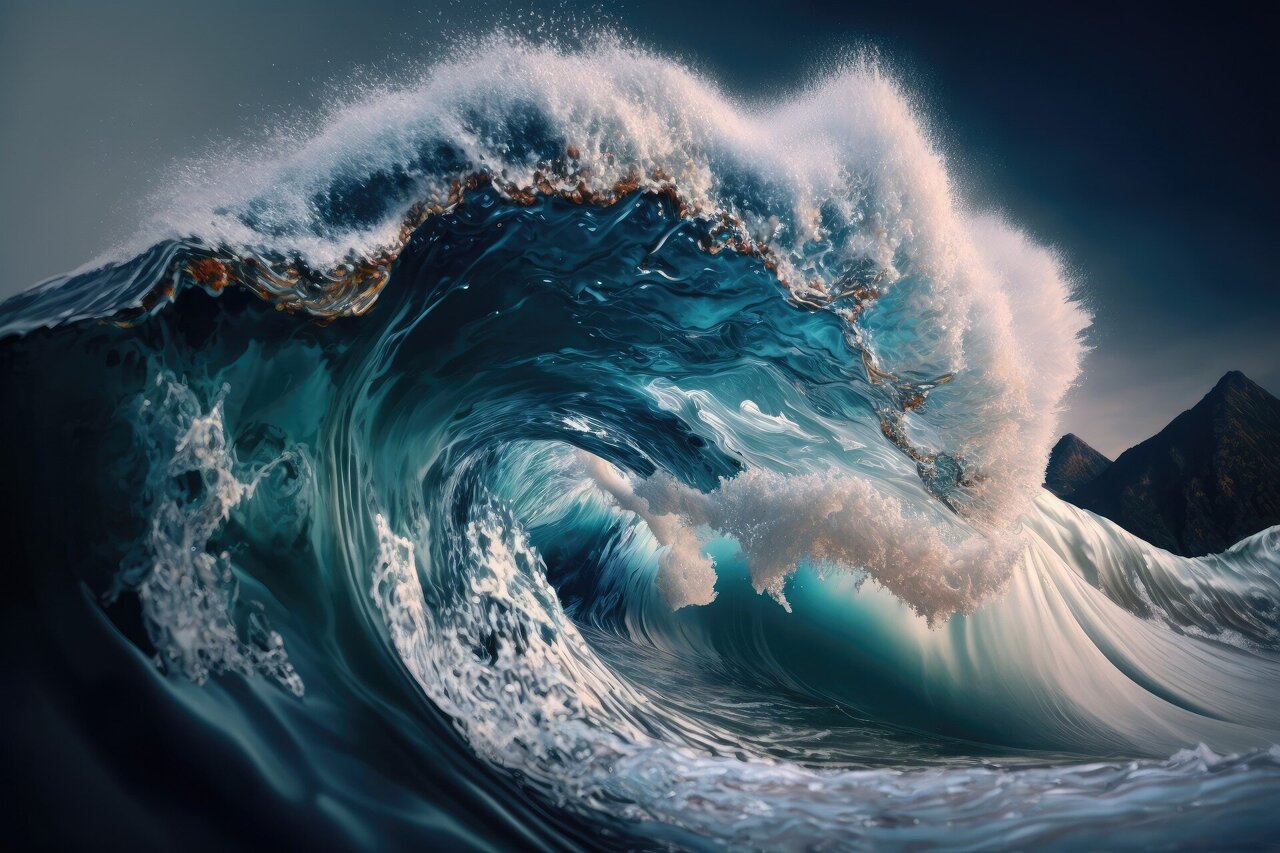Long believed to be a myth, abnormally large rogue waves are indeed a reality, with the potential to devastate ships and even damage oil rigs. Researchers at the Universities of Copenhagen and Victoria have devised an artificial intelligence algorithm to forecast the occurrence of these oceanic behemoths by analyzing 700 years’ worth of wave data encompassing over a billion waves. This newfound knowledge can significantly enhance maritime safety.
Traditionally, sailors have recounted stories of monstrous waves, also referred to as rogue waves or demon tides. The validation of these narratives came in 1995 when a colossal 26-meter-high rogue wave struck the Draupner oil platform in the North Sea, providing concrete evidence of their existence.
Subsequent to this landmark event, extensive research has been conducted on these enigmatic phenomena. Scientists at the Niels Bohr Institute, University of Copenhagen, have formulated a mathematical model, leveraging artificial intelligence methodologies, to elucidate the conditions under which rogue waves may manifest.
By amalgamating data on oceanic movements, water conditions, depths, and bathymetry, along with information from buoys stationed at 158 locations worldwide, researchers have amassed a comprehensive dataset comprising over a billion waves, spanning 700 years.
The study’s findings reveal that rogue waves, defined as waves at least twice the height of surrounding waves and potentially exceeding 20 feet in stature, are not as rare as previously believed. In fact, the database uncovered approximately 100,000 occurrences of rogue wave-class waves, signifying a more frequent phenomenon than anticipated.
Artificial intelligence played a pivotal role in this research, employing various techniques to distill the complex causative factors of rogue waves into an equation that can be scrutinized and applied in future investigations.
Contrary to conventional wisdom attributing rogue wave formation to the rapid merging of waves, the study underscores the significance of “linear overlap” resulting from the convergence of two storm systems. This insight challenges long-held assumptions and aligns with historical observations dating back to the 1700s.
The practical implications of this research extend to the shipping industry, where the developed algorithm can aid in preemptively identifying potential risks posed by rogue waves, enabling proactive route planning to mitigate hazards for the approximately 50,000 cargo vessels navigating global waters.
Furthermore, the transparency of the algorithm and accessibility of the wind and wave data underscore a commitment to open science, allowing stakeholders ranging from shipping companies to public officials and weather services to leverage this knowledge for improved safety measures.
In conclusion, the interdisciplinary collaboration between artificial intelligence and oceanographic research has yielded a groundbreaking formula for predicting rogue waves, advancing our understanding of these extraordinary natural occurrences. For further insights, refer to the Proceedings of the National Academy of Sciences (2023) by Häfner et al., titled “Machine-guided discovery of a real-world rogue wave model.”






